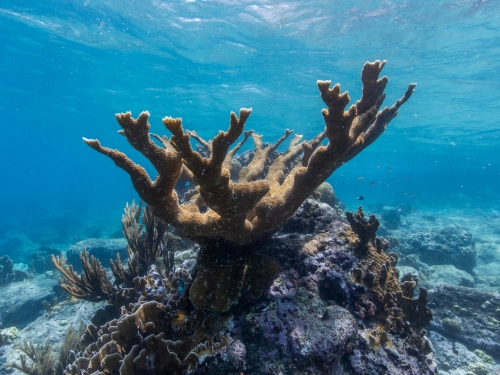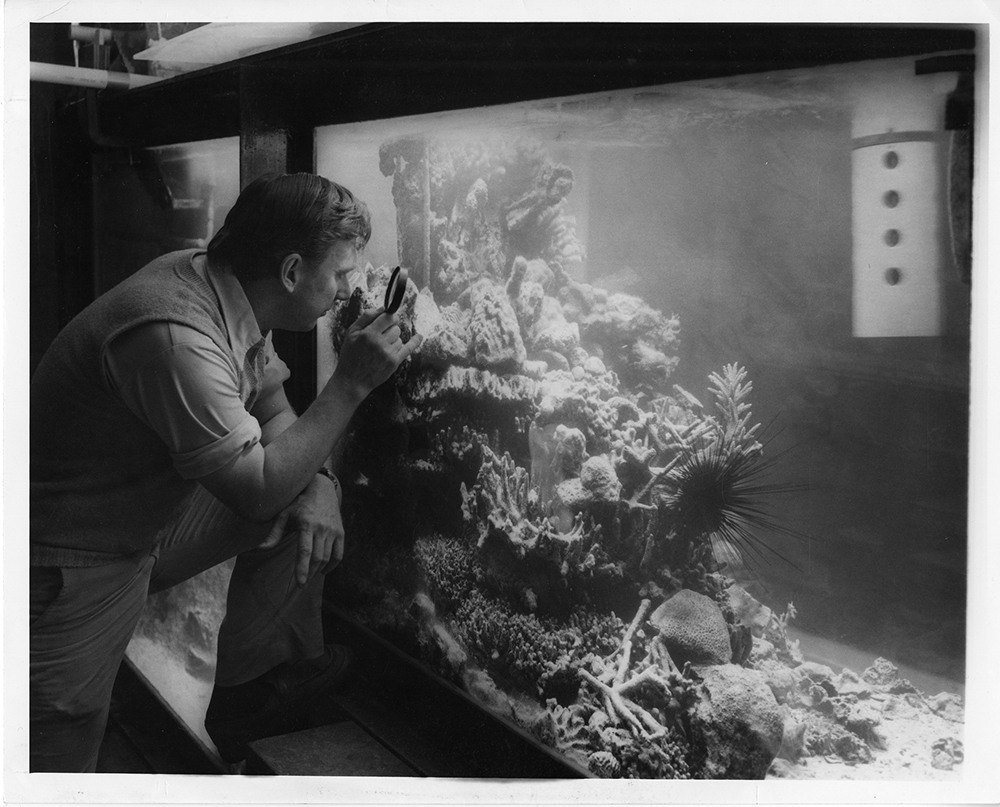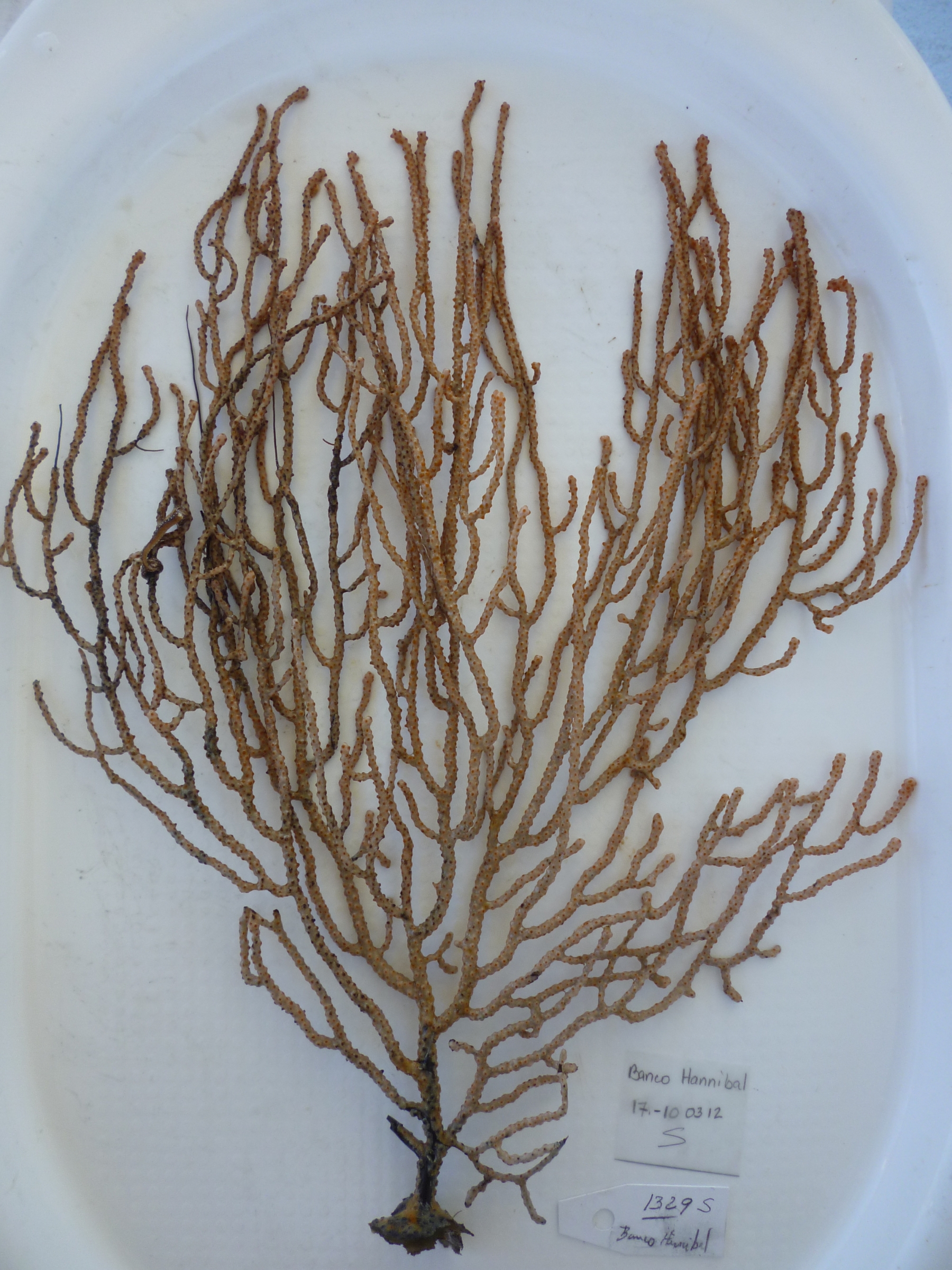
Decades of research by Smithsonian scientists means we have a better understanding of corals

A healthy coral reef with both hard corals and softer-bodied relatives at Chinchorro Reef in the Mexican Caribbean Sea. (Photo courtesy of David Paz-Garcia)
In 1980, the National Museum of Natural History made history by exhibiting an active research project from under the sea. In a world first, they put a living coral reef on display.

The project started more than a decade earlier when National Museum of Natural History paleobiologist Walter H. Adey began studying algae growth. Instead of growing algae by itself in a laboratory, he thought it would make more sense to see how it grew among other reef organisms and environmental conditions that mimicked real life. So, he took a 350-gallon tank and shined high-intensity light on it to simulate the sun, and he used a generator to create a current in the water.
By 1979, Adey scaled up his experiment to a 3,000-gallon system that went on public display the following year in a space now occupied by the Kenneth E. Behring Family Hall of Mammals. The exhibition featured over 200 species of coral, algae, fish, mollusks, and other marine life. And like the FossiLab today, the space featured a marine lab where visitors could watch scientists at work. The exhibition was on display for 20 years, until it was moved to the Smithsonian Marine Station in Fort Pierce, Florida. Meanwhile, the National Museum of Natural History’s Sant Ocean Hall currently features a smaller, 1,500 gallon Indo-Pacific coral reef tank.
Despite the fact that Adey’s original reef system left the National Mall, the Smithsonian still leads global research on coral conservation. Let's take a dive into some of the Smithsonian’s recent coral-related projects.

New Coral Species Discovered
Near Coiba National Park, an island nature reserve off the Pacific coast of Panama, lies an underwater mountain with a flat top called Hannibal Bank. The park is a World Heritage Site rich with life, but its surrounding waters have not been thoroughly studied.
Lately, researchers at the Smithsonian Tropical Research Institute, in collaboration with global partners, have been sending remotely operated vehicles down beneath the waves. These vehicles are photographing the sea floor and taking samples, helping researchers discover there is as much life underwater as there is above it. In 2019, Héctor M. Guzmán and his colleagues discovered a new coral species over 200 feet below the ocean surface. Called Psammogorgia pax (“pax” meaning “peace” in Latin), the fan-shaped coral is just one of many species of corals that live in the area; its discovery will help researchers complete the picture of marine biodiversity at Hannibal Bank and inform leaders on how best to preserve these species.
Exploring Corals of the Deep Sea
Many of Panama’s corals are like the ones you picture in your head: colorful and sundrenched. But not all corals are colorful (P. pax is white), and not all are found near the ocean surface. Some reside in the deep sea, where sunlight is scarce. Further, some of these corals are black, which makes them hard to spot.
That challenge led Andrea Quattrini, a researcher at the National Museum of Natural History, on an expedition in collaboration with the National Oceanic and Atmospheric Administration to the deep, largely unexplored waters off Puerto Rico. She and her team deployed a remotely operated vehicle that could reach depths of 4,000 feet below the surface. Over seven dives, the team mapped an area of the sea floor the size of Chicago and collected a suite of biological samples, plus hours of footage.
Among the footage, they spotted a patch of dark, gangly coral that they had never seen before. In fact, it was likely that no human eyes had ever seen it. Since the team discovered the coral species, they got to name it, and they chose the name A. puertoricoensis, after the nearby island.
Genetic Testing Provides Coral Answers
In her deep sea explorations, Quattrini found that eyes can be deceiving when it comes to identifying coral species. She and her colleagues used genetic testing to find that a coral species scientists thought lived all over the world is actually two species: one that lives in the South Pacific and one that lives everywhere else. Quattrini’s work demonstrates the hidden biodiversity within coral species, giving us a better sense of how to conserve them.
But as ocean temperatures rise, Quattrini found that harder reef-building corals like these are struggling to survive. According to researchers at the Smithsonian Tropical Research Institute, it might be oxygen deprivation that’s killing off corals. Whatever the cause, the Smithsonian is doing what it can to help preserve this diverse group of invertebrates.
New Methods for Protecting and Conserving Coral
Researchers at the National Museum of Natural History are making progress in staving off a pandemic among the coral reefs in Florida. A mysterious ailment that has devastated the state’s coral reefs since 2014 is rapidly spreading through the Caribbean.
In 2023, Valerie Paul and her colleagues at the Smithsonian Marine Station discovered the first effective bacterial probiotic for treating this disease, called stony coral tissue loss disease. In several tests, the team found a bacterial species that successfully stopped or slowed the progression of the disease in most cases and prevented the sickness from spreading to nearby healthy corals. Next, they are going to work on a system for delivering this treatment more widely.

In the meantime, the Smithsonian’s United Nations-endorsed Coral Reef Sentinels program might make it possible for conservationists to get near real-time data on coral reef health. Thanks to autonomous aquatic robots, we will be able to keep a closer eye on the little critters.
Mary Hagedorn and her colleagues at the Smithsonian’s National Zoo and Conservation Biology Institute are working on another method to save coral. She is investigating how to freeze coral species in a way where they can be thawed and revived later.
Hagedorn and her team announced last year that they successfully cryopreserved and revived entire coral fragments for the first time. These were the most complex organisms to ever be frozen and thawed successfully, and it could mean a way of saving critical coral species from complete annihilation. Hagedorn hopes to freeze enough coral sperm, larvae, and adult polyps to not only support the conservation of living reefs, but also to restart reefs that are likely to go extinct in the future.
Work continues across the Smithsonian to study, conserve, and educate the public about the value of corals. Stay tuned for future discoveries.


